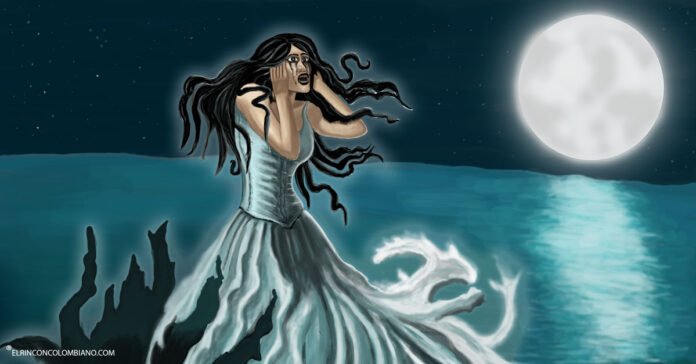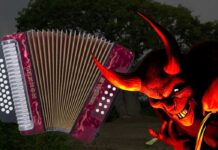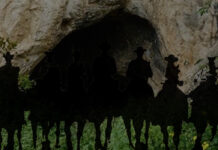The legend of La Llorona tells the tragic story of a woman who murders her children in a river, and then repentant and cursed, she wanders the world crying and looking for her children.
Content
- ¿Cuál es La Leyenda de la llorona?
- Origin of the legend of La Llorona
- Versions of the legend of La Llorona
- What does the llorona look like?
- Where does the llorona appear?
- Tributes and representations of La Llorona
- How to protect yourself from the llorona?
The legend of La Llorona relates that during the time of the conquest there was a beautiful woman who was the lover of a wealthy man of Spanish origin. From the relationship they had, two children were born. The woman asked the man to formalize the relationship in order to of being able to have a normal relationship, but the man flatly refused.
Given the anger and despair that the woman felt, she planned to take revenge on the man. She took her children to the river that was close to her house and asked them to enter the river with her. Once there, she submerged them in the water until the children were drowned.
Shortly after, the woman reacted and realized the great evil she had done, so she ran to the river in despair but it was too late, so she began to shout “Oh my children” “where are my children”.
(Read Also: The terrifying story of Pata Sola)
From that moment on, the woman was condemned to wander through rivers, lakes and streets in search of her children. Some claim to have heard the woman's overwhelming screams during the night, others say they have seen the spectral figure of the weeping woman walking near the rivers. , they say that she is a woman dressed in white who has long black hair and that her pale face looks more like a caravel.
In some places in Colombia it is stated that they have seen and heard the weeping woman shouting “Oh where are my children” while she wanders around in frayed clothes and carrying her dead son in a blue sheet in her arms. It is also said that she usually attacks the nurses. , midwives and women who help prevent the birth of a baby, that is, all those people who induce abortion.
It is said that the llorona is a harbinger of bad luck and misfortune, when she is heard crying it means that tragedy is lurking whether in the form of an approaching death, a natural disaster or another tragedy.
Origin of the legend of La Llorona
The oldest known origin of the llorona is located in Mexico among the indigenous peoples long before Spanish colonization; In the stories of the indigenous people, this spectrum was related to goddesses mostly related to death and negative aspects; Although some of them were considered deities with important characteristics such as the protection of women who died during pregnancy, these goddesses usually appeared near rivers, dressed in white, with large black hair, and they cried for their children. Among the most related are Tenpecutli and Cihuacóatl.
(Read Also: The disturbing Legend of the Footlight)
During the Spanish conquest, many of these myths were transformed into legends with more mundane backgrounds, mainly because they could not relate these stories to indigenous deities, which is why they took the form of a Creole, mestizo or indigenous woman, according to the story, who killed their children for revenge, madness or love in rivers or lakes.
Although of course, one cannot be completely certain that this is its real origin, since most legends arise as a teaching tool with which to provoke fear in the people of the time about impure acts, such as lust, sexual relations before marriage, abortion, infidelity, etc.
Versions of the legend of La Llorona
La llorona can be considered the most popular Latin American legend and spread throughout the different Latin American countries. There are many versions of the legend that in each country, city and region acquire different nuances, origins and forms.
In some versions the Llorona does not kill her children but someone else does, in other versions it is said that she has only one child, in others it is said that she has several, some say that she murdered them to get revenge on her lover, in others She says that she does it to have her husband's love only for her, in others it is reported that both her children and she died accidentally, among many more characteristics that change depending on the country, the city or even the town where it is told.
(Read Also: Legend of the Silbón: One of the most terrifying legends of the plains)
Due to her characteristics, it is said that la llorona is the starting point of many other legends, such as the legend of the widow, the widow, the cegua, María Pardo, the ciguanaba, the tulevieja, the sayona, tarumama, the calchona, the pucullén, the ghost of the curve and many other female spectral characters from Latin American folklore.
Among the oldest and most recounted versions we find that of Bernal Díaz del Castillo who participated in the conquest of the Mexica empire, in which he relates that an indigenous woman was the lover of a wealthy Spaniard who refused to formalize the relationship when she asked him to, In revenge, she murdered her children in the river with a knife. When she came to her senses, she ran to the river and began screaming desperately for her children. As it is, there are many other versions.
What does the llorona look like?
Almost all versions of the legend of La Llorona tend to coincide in several very fundamental aspects about what she looks like; It is said that he dresses in white, that he has long black hair and that he screams or laments saying “Oh where are my children.”
In other versions it is said that he has a skull for his face, in others it is said that he carries the child he killed in his arms, other stories say that he expels fire from his eyes, among many other characteristics that are attributed to him depending on the place, but the most Characteristic is her white dress, her black hair and her pitiful cry.
Where does the llorona appear?
The llorona usually appears mainly near water sources such as rivers, ponds, lakes and lagoons; but its story has been so widespread that there seems to be no place where it does not appear, since some say that it walks through the streets, near churches, in cemeteries, parks, etc.
(Read Also: Legend of the Scared Cabellona or the Mechuda)
Being such a common legend throughout Latin America, it cannot be said that there is a specific city where it does not appear. Its story has infiltrated the cultural identity of the entire continent, appearing from Mexico, passing through Colombia, Chile, Bolivia, Argentina. , Uruguay, Venezuela, Costa Rica, Panama, Ecuador, and even in the United States.
Tributes and representations of La Llorona
La llorona can be considered the specter or mythological figure that has the most representations and tributes in Latin America. Among these tributes are sculptures, paintings, songs, books, stories, poems, TV series, movies, parades and more.
In many Latin American countries there are sculptures in parks that pay tribute to the figure of La Llorona; in Colombia, for example, her figure stands out in the malocas park of Villavicencio.
Within many festivals in Mexico, Colombia and other countries, the llorona has become a character that is very present, for example in the Day of the Dead parades in Mexico or in the Festival of Myths and Legends in Medellín, Colombia.
(Read Also: Legend of the Headless Priest)
In literature, La Llorona has become not only a figure of inspiration for stories, stories, essays, poems and novels, but also a powerful cultural reference. Within this world, we highlight the novels “The Legend of La Llorona (1984).” by Rudolfo Anaya and “The River, the Well and Other Borders (1995)” by Eduardo Antonio Parra.
Within cinema and television, his figure has also gained great importance, having animations, films and appearances in TV series that relate or are based on this legend.
Below is a list of films based on the story of La Llorona:
- La Llorona by Ramón Peón, 1933, considered the first horror film in Mexican cinema.
- The Inheritance of La Llorona (1947)
- The cry of death (by Fernando Méndez, 1958)
- La Llorona (by René Cardona, 1960)
- The Curse of La Llorona (by Rafael Baledón, 1963)
- The Revenge of La Llorona (by Miguel M. Delgado, 1974)
- The Lloronas (2004)
- Kilometer 31 (by Rigoberto Castañeda, 2005)
- Haunted from Within (2005)
- The Wailer trilogy (by Andrés Navia, 2006) The Wailer 2 (2007) The Wailer 3 (2012)
- The Cry (by Bernardine Santistevan, 2007)
- The River Trilogy: Legend of La Llorona, Curse of La Llorona and Llorona Gone Wild. (from Terence Williams 2006)
- J-ok'el (Benjamín Williams, 2007)
- The Legend of La Llorona (2011) animated film.
- The Curse of La Llorona (2019)
- La Llorona (by Jayro Bustamante 2019)
In the American series of Supernatural and Grimm, La Llorona is the central axis of the first episode or pilot of the Winchester series and episode 9 of the second season of Grimm.
Within music there are also great references to this legend, highlighting “La Llorona”, a song originally from Oaxaca, Mexico, which has been performed by many artists, especially the version by the acclaimed singer Chávela Vargas.
(Read Also: The Legend of the Evil Chicken)
In Mexico City, the legend of La Llorona was declared Intangible Cultural Heritage of Mexico City by the Legislative Assembly of the Federal District.
How to protect yourself from the llorona?
In most stories the llorona is described as a harmless being who simply cries and announces the tragedy with her presence; However, there are versions where they claim that he attacks or kidnaps children. For this reason, many want to know how to protect themselves from the llorona, however there is no way to do it within her legend, what is most often commented on in this regard is that spooks like the llorona are afraid of animals, especially dogs and animals. prayers entrusting themselves to God's protection.
Did you like this article? Leave your opinion in the comments and share this story with your friends and acquaintances so they can discover our unique stories.





